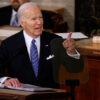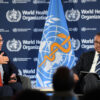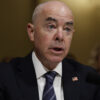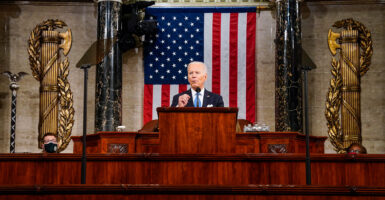President Joe Biden’s State of the Union address on March 1 offers a unique opportunity to break with past pandemic policies and announce that we are moving on from COVID-19.
The public policy response to the pandemic has so far depended on nonpharmaceutical interventions and vaccines. These policies appear to have reached the limits of their utility.
Federal public health officials urged lockdowns, mask mandates, school closures, and other restrictive policies in hopes of slowing the contagion’s spread until a vaccine arrived.
By last July, Biden—who had campaigned on promising to “shut down” the virus—announced that vaccines had brought us “closer than ever to declaring our independence from a deadly virus.”
But independence proved elusive. Cases reached a new high later that summer, and vaccination rates stalled. The president’s rhetoric took a toxic turn. He accused tens of millions of unimmunized Americans of creating a “pandemic of the unvaccinated.”
“The unvaccinated overcrowd our hospitals, are overrunning the emergency rooms and intensive care units, leaving no room for someone with a heart attack, or pancreatitis, or cancer,” he announced last summer.
We recently published a Heritage Foundation special report that examines data from throughout the pandemic. Our paper looked at a number of aspects about the pandemic, including the president’s assertions and exposed that claim as false.
First, Centers for Disease Control and Prevention data on COVID-19-related hospitalizations does not distinguish between patients admitted for that illness and those admitted for other diseases who also happened to test positive for COVID-19.
It thus vastly overstates the impact of COVID-19 on the hospital system.
New York state does keep that data, depicted in the chart below. Depending on the time frame, the number of admissions due to COVID-19 is either slightly larger or equal to admissions of patients who tested positive for COVID-19 but were admitted for other reasons.

Second, the CDC has failed to disclose sufficiently comprehensive data about the vaccination status of hospital patients with COVID-19.
The New York Times has reported that “the agency has been reluctant to make those figures public because they might be interpreted as the vaccines being ineffective.”
>>> Read Doug Badger’s and Kevin Dayaratna’s special report here.
Some states and foreign countries do collect and report that data. Massachusetts, for example, reports that vaccinated patients constituted a rising percentage of admissions with COVID-19, outnumbering unvaccinated patients by early February.
The United Kingdom keeps even more detailed data, grouping patients by age and vaccination status. The U.K. looked at patients who sought emergency care, returned positive COVID-19 tests, and then were admitted to the hospital.
In the four weeks ending Feb. 6, 64% of such patients were either fully vaccinated or boosted. In every age group, vaccinated patients outnumbered unvaccinated patients.
As the chart below shows, the rate of hospitalizations was lower for vaccinated people than unvaccinated people in every age group under 60.
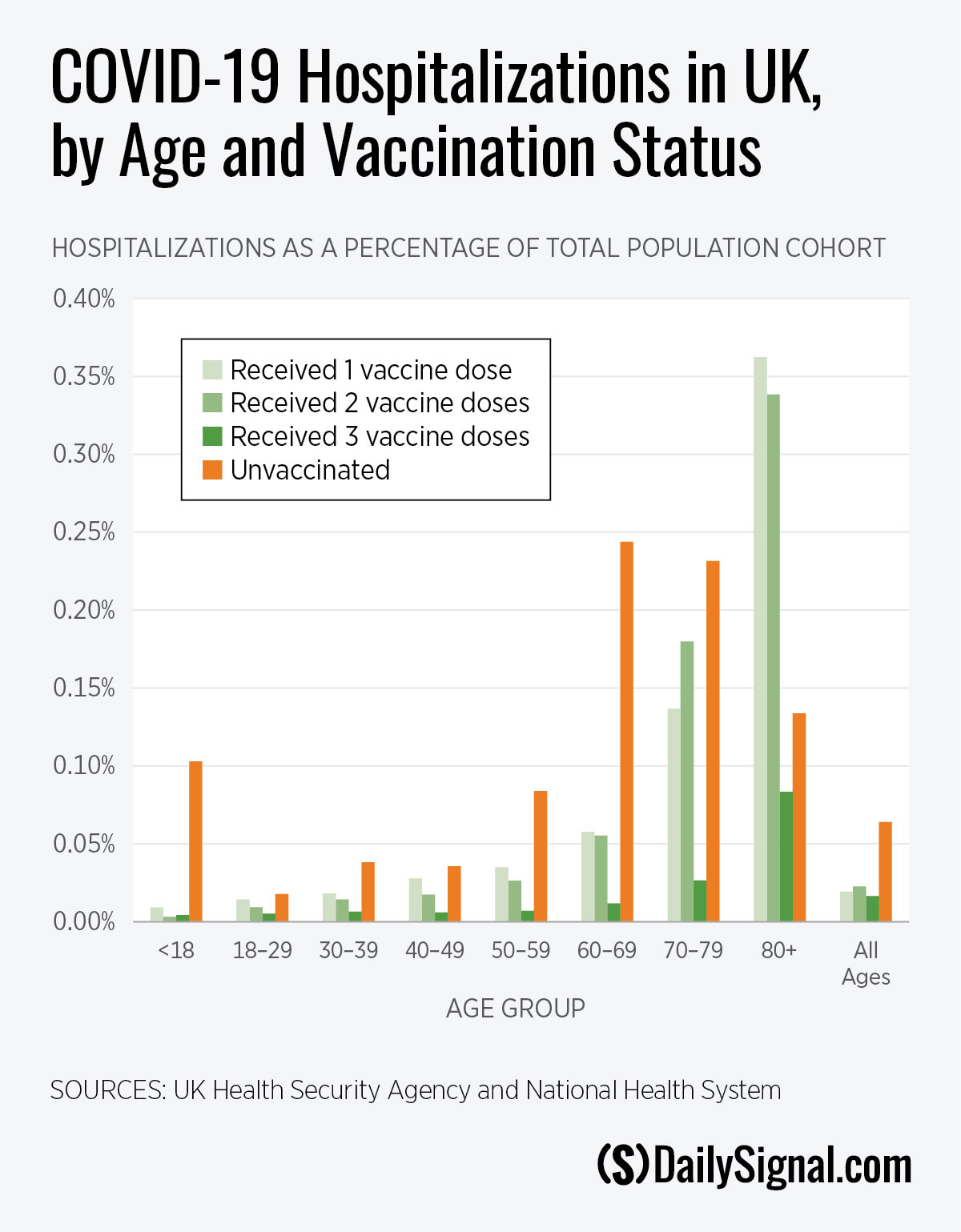
Among people over 60, those who received three shots had the smallest risk of being hospitalized with COVID-19.
Vaccines thus appear to reduce the risk of severe illness.
The president’s claim that unvaccinated people are overcrowding hospitals doesn’t hold up to scrutiny. Nor does his promise to “shut down” the virus seem feasible.
The president’s claim that unvaccinated people are overcrowding hospitals doesn’t hold up to scrutiny. Nor does his promise to “shut down” the virus seem feasible.
CDC Director Rochelle Walensky has observed that COVID-19 “is likely to become an endemic disease here in the United States and, really, around the world.”
“Zero COVID-19” is thus an unrealistic policy aim.
The president should state that explicitly. He should continue to encourage vaccines to reduce the risk of severe illness. But he should also walk back his false claim that this is a pandemic of the unvaccinated and recognize that most unvaccinated people are unlikely to change their minds.
He should instead announce a new plan for living with the virus. He should note that most Americans have acquired some immunity to the pathogen naturally or through vaccines.
And he should tout new medicines that patients can take at home that reduce the risk of hospitalization by 89%.
Our paper has modeled the effect of one of these medications, Paxlovid. We found that, even if a new variant were to double the rate of COVID-19-related hospitalizations from 3.5% to 7% of confirmed cases, Paxlovid would hold those hospitalizations well below the number of hospitalizations induced annually by the seasonal flu and the respiratory syncytial virus.
The president should declare that COVID-19 is now a treatable disease. And he should acknowledge that it may well be with us into the foreseeable future, not unlike heart disease, cancer, and the seasonal flu.
People at greatest risk should continue to take precautions, but government mandates and restrictions are no longer appropriate.
COVID-19 should cease to be the obsessive focus of public policy. Perpetuating the emergency mindset is futile, misguided, and just not feasible.
The president should call for a return to normalcy in our communities, schools, and places of commerce, urge state and local governments to shelve restrictions and mandates, and declare that the U.S. is moving on from COVID-19.
Have an opinion about this article? To sound off, please email letters@DailySignal.com and we’ll consider publishing your edited remarks in our regular “We Hear You” feature. Remember to include the url or headline of the article plus your name and town and/or state.







